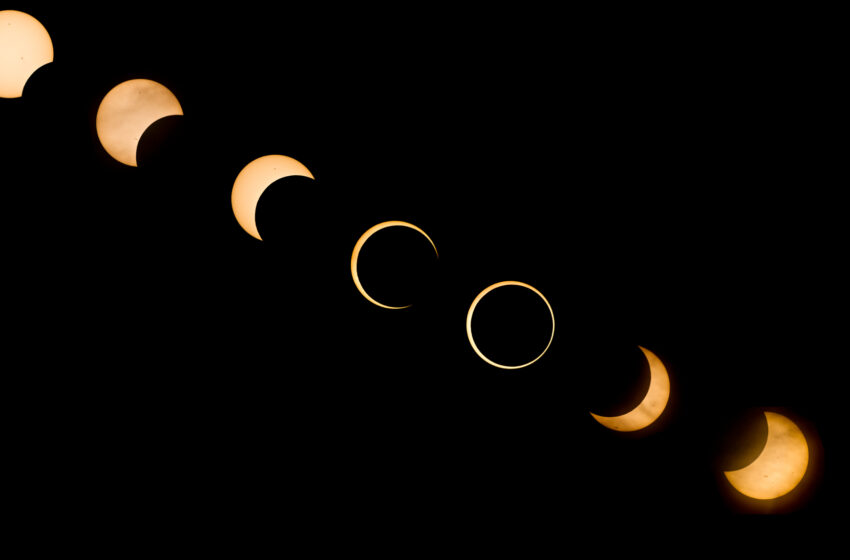Solar Eclipse 2023: A Spectacular Celestial Event in Texas

On Saturday, October 14, 2023, a spectacular celestial event graced the skies of Texas – an annular solar eclipse. This event was not just limited to Texas but was visible across a narrow strip of land stretching across the United States from Oregon to Texas and continuing on to Central and South America.
What is an Annular Solar Eclipse?

An annular solar eclipse occurs when the moon is further from Earth and obscures only part of the solar disk. The moon being at its furthest point in its orbit from Earth at that time (known as apogee), it doesn’t completely block the Sun; instead, a dramatic “ring” effect is seen as the bright edge of the Sun is visible around the black silhouette of the Moon. The distinct appearance of this style of eclipse is why it’s called an annular eclipse, as annular means ring-like.
Stages of the Annular Solar Eclipse
The event on Oct. 14 was an annular eclipse, meaning that the moon was far from the Earth, and therefore, the sun was not completely obscured, leaving a fiery golden ring shining around the dark lunar disk. This happened gradually, with the annular eclipse bookmarked by partial solar eclipse phases.
- First contact: During the first stage of the eclipse, the moon began to pass in front of the sun, beginning a partial solar eclipse.
- Second contact: Happening at around 1 hour and 20 minutes after first contact begins, this marked the beginning of the annular eclipse or the annularity.
Viewing the Solar Eclipse Safely
One of the best ways to view the Solar Eclipse is to project the sun. All we need is a pair of binoculars and a telescope, and a little bit of adjusting throughout the Eclipse, and we can have our own watch.
Impact on Texas’ Power Grid
The solar eclipse posed a unique challenge to Texas’ power grid. However, it was expected that the state’s cooler weather could work in favor of energy sources. ERCOT closely monitored the state’s power grid during Saturday’s solar eclipse as this event posed a brand new test for the grid4.
In conclusion, October 14th’s annular solar eclipse was indeed a sight to behold for residents of Texas and other parts of America. It served as a reminder of our place in this vast universe and provided an opportunity for scientists and enthusiasts alike to learn more about these fascinating celestial events.
How to project the sun safely during a solar eclipse
- Pinhole Projection: This is one of the simplest and safest methods to view a solar eclipse. Here’s how you can do it:
- Take a sheet of paper and make a tiny hole in the middle of it using a pin or a thumbtack. Make sure that the hole is round and smooth.
- With your back towards the Sun, hold this piece of paper above your shoulder allowing the Sun to shine on the paper.
- The second sheet of paper will act as a screen. Hold it at a distance, and you will see an inverted image of the Sun projected on the paper screen through the pinhole.
- To make the image of the Sun larger, hold the screen paper further away from the paper with the pinhole.
- Box Projector: This works on the same principles as the pinhole projector but requires a little more time and a few extra items to construct. However, it is more sturdy.
Remember, never look at the Sun directly without proper eye protection. You can seriously hurt your eyes and even go blind. Always keep your back towards the Sun while looking at a pinhole projection. Do not look at the Sun through the pinhole, binoculars or telescope.



